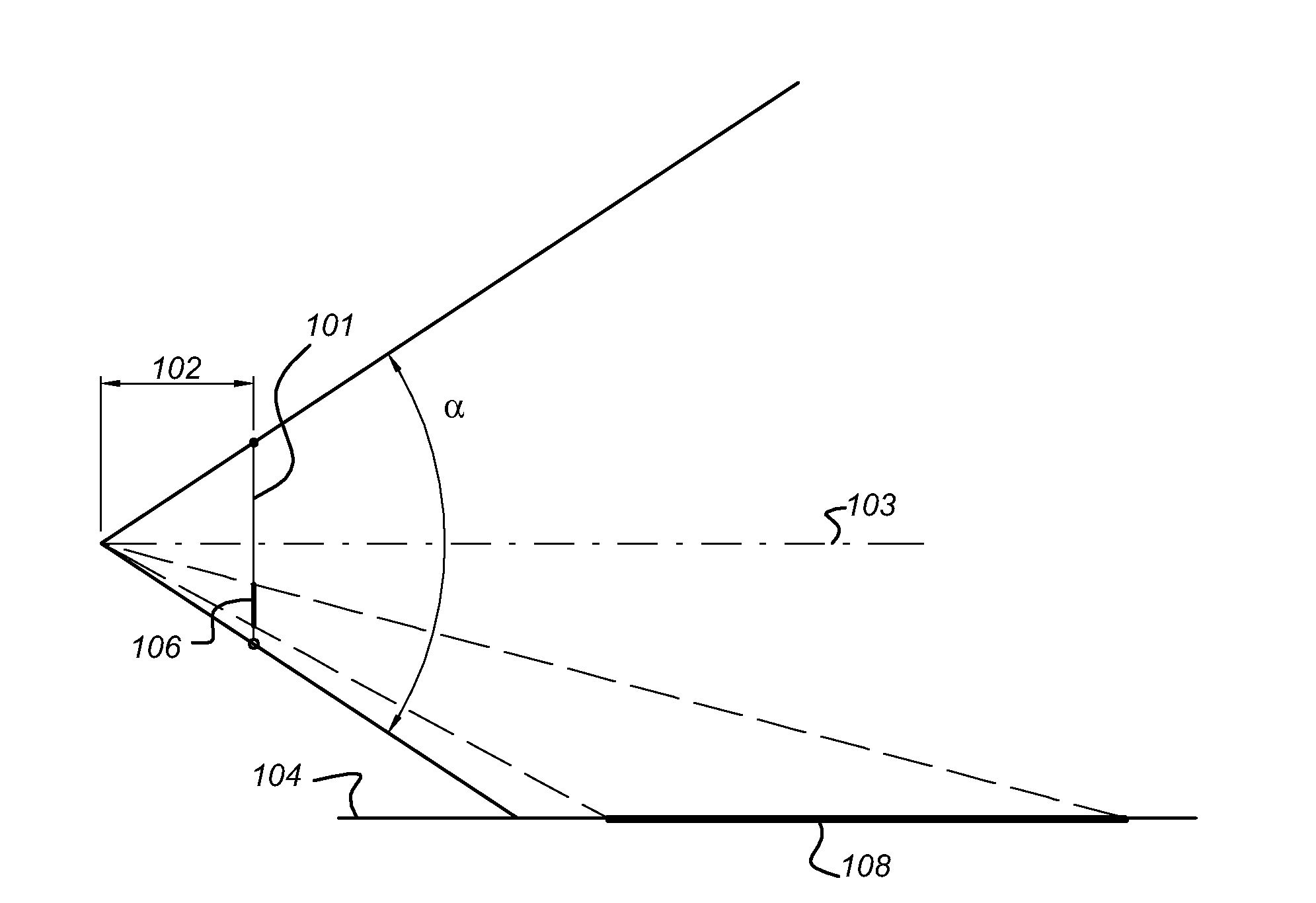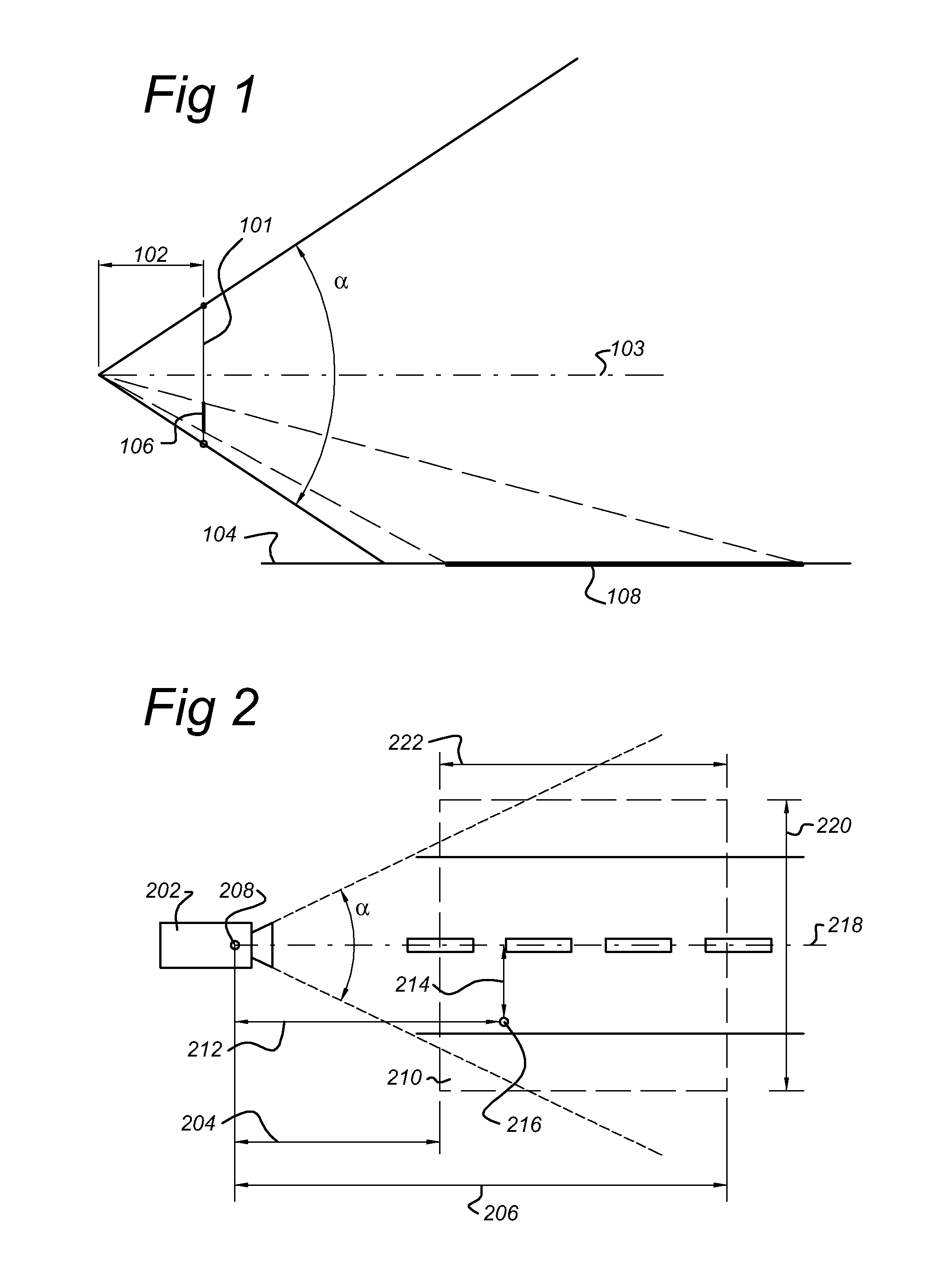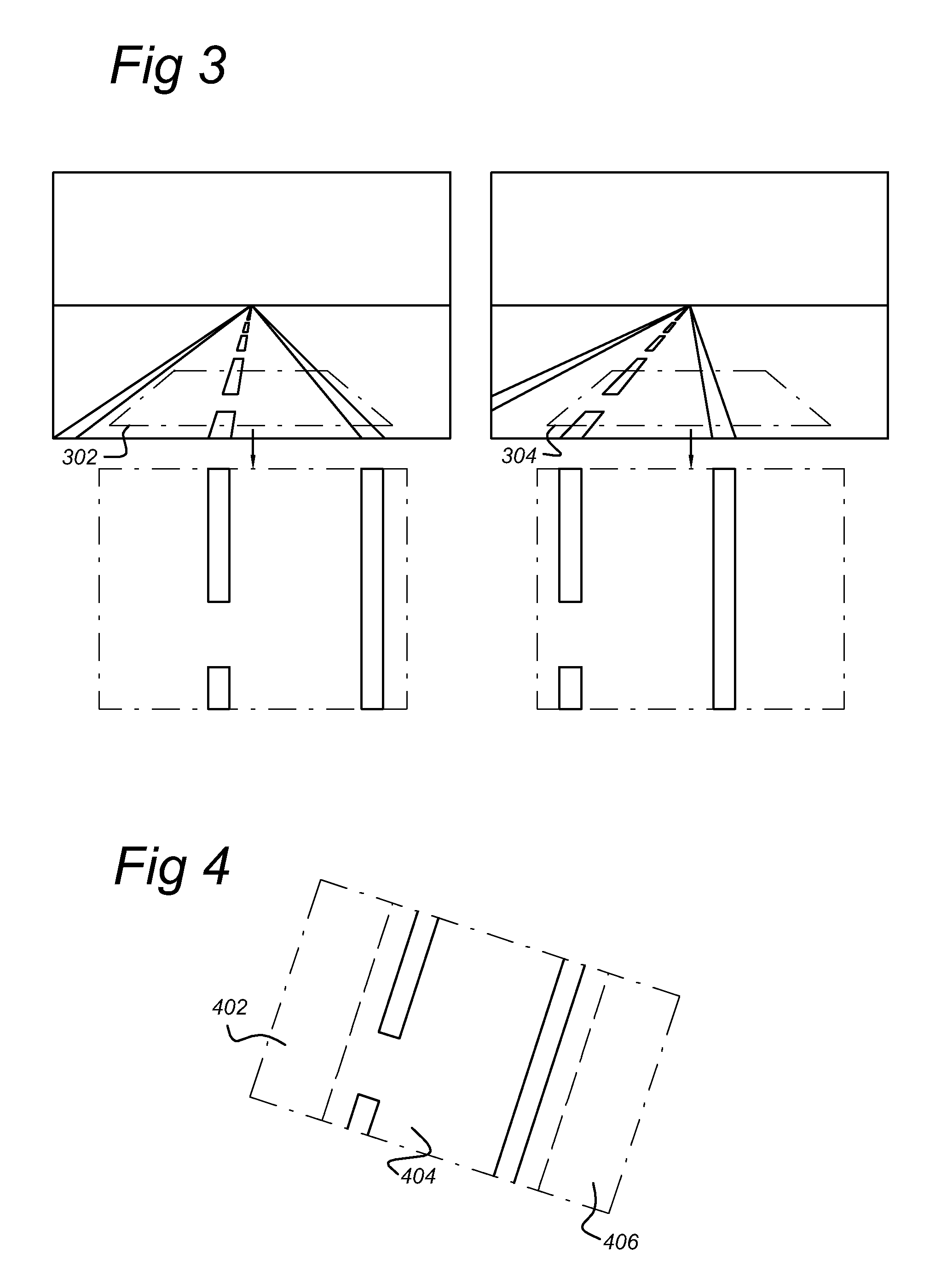Method and apparatus for generating an orthorectified tile
- Summary
- Abstract
- Description
- Claims
- Application Information
AI Technical Summary
Benefits of technology
Problems solved by technology
Method used
Image
Examples
Embodiment Construction
[0075]FIG. 1 shows a side view of the general principle of conversion of source images into orthorectified tiles. An image sensor 101 in a camera or CCD-camera 202 (shown in FIG. 2) records a sequence of source images. The source images represent more or less vertical images which are recorded by a terrestrial based camera. The source images could be a sequence of still pictures recorded by means of a still picture camera, which camera is triggered every displacement of e.g. 10 meter. A camera comprising the image sensor has an angle of view α. The angle of view α is determined by the focal length 102 of the lenses of the camera. The angle of view α could be in the range of 45°103, which is in the centre of the angle of view. In FIG. 1, the looking axis 103 is parallel to a horizontal plane 104. The image sensor 101 is mounted perpendicular to the looking axis 103. In this case, the image sensor 101 records “pure” vertical source images. If further the height of the image sensor is ...
PUM
 Login to View More
Login to View More Abstract
Description
Claims
Application Information
 Login to View More
Login to View More - R&D
- Intellectual Property
- Life Sciences
- Materials
- Tech Scout
- Unparalleled Data Quality
- Higher Quality Content
- 60% Fewer Hallucinations
Browse by: Latest US Patents, China's latest patents, Technical Efficacy Thesaurus, Application Domain, Technology Topic, Popular Technical Reports.
© 2025 PatSnap. All rights reserved.Legal|Privacy policy|Modern Slavery Act Transparency Statement|Sitemap|About US| Contact US: help@patsnap.com



